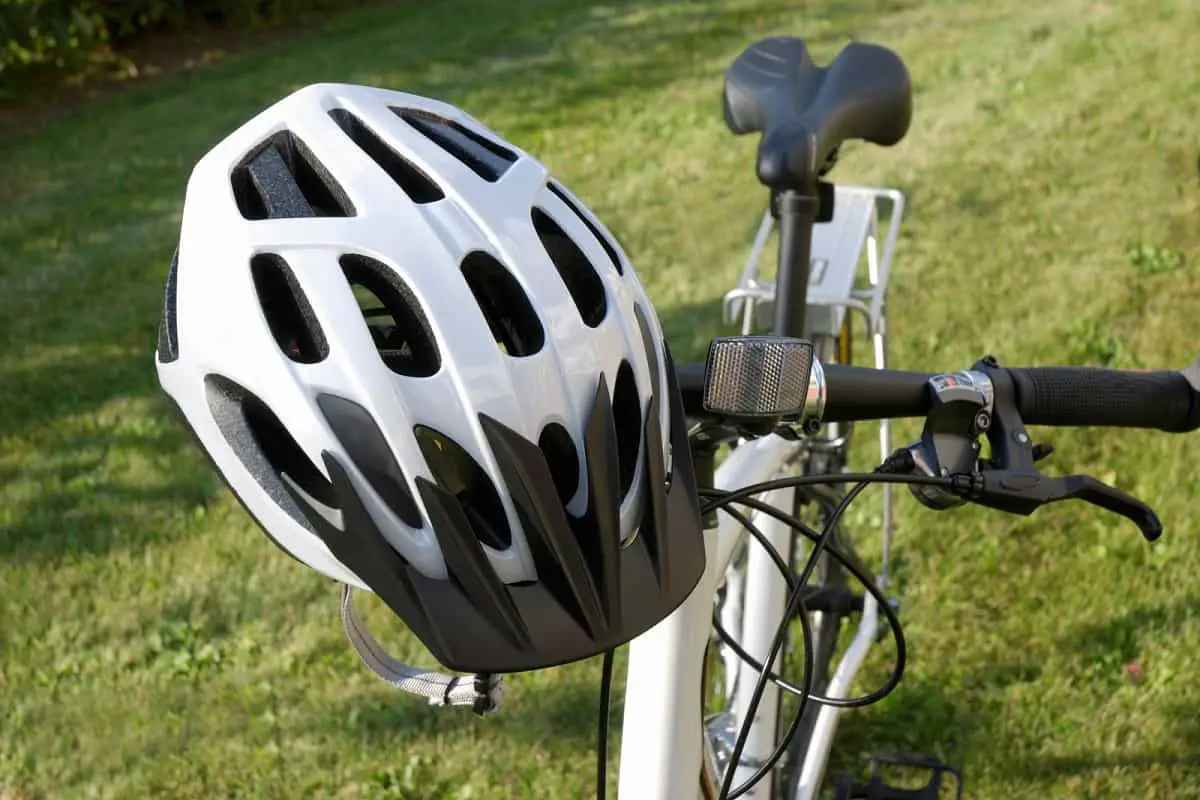Why Do Bike Helmets Have Holes?
Have you ever wondered why bike helmets have holes? Even though helmets come in different shapes and sizes, one common feature is the presence of holes. So, what’s the deal with these holes?
Turns out, these holes serve a few different purposes that are practical, rather than just cosmetic. They help to improve ventilation, keeping your head cool and comfortable during long rides, and enhance aerodynamics, which helps to improve your overall performance.
In this article, we’re going to dive deeper into the question of ‘why do bike helmets have holes’. We’ll explore the essential role these air vents play in helmet design and investigate their advantages and potential disadvantages.
By the end of this article, you’ll have a better understanding of why these holes are such an important aspect of a good bike helmet, and why you should keep them in mind when you’re looking for your next one.
KEY TAKEAWAYS
* Bike helmets typically have holes or air vents for the following reasons:
> Ventilation for the rider’s comfort.
> To reduce the weight of the helmet.
> Aerodynamics: to reduce wind resistance and drag while mobile.

Disclosure: As an Avantlink and Amazon Associate, we earn from qualifying purchases. Disclosure Statement.
Page Content
Why Do Bike Helmets Have Holes?
Bike helmets have always been designed with air vents or holes, which serve several essential purposes. The primary purpose is to provide adequate ventilation to the rider’s head during a ride.
As the rider cycles, the front air vents allow fresh air to enter the helmet, pass through it, and exit through the rear vents. This circulation of air keeps the interior of the helmet cool and comfortable for the rider, preventing overheating that can lead to fatigue and reduced concentration.
Moreover, these holes help to reduce the overall weight of the helmet while maintaining its protective properties. Manufacturers use reinforced in-mold frames to create more durable, lightweight helmet shells with larger vents that offer better protection and comfort to the rider.
Additionally, some helmets have specifically designed vents that reduce wind resistance, which is particularly important for competitive cycling where every second counts.
Apart from their functional purposes, the placement and design of the vents also contribute to the style and appearance of the helmet. Cyclists not only want protection and comfort, but they also want a helmet that looks good and complements their personality and/or their outfit. The fashion and style factor associated with the design of the helmet is crucial, and manufacturers must incorporate this factor into their helmet’s design.
Potential Drawbacks of Bike Helmet Holes
Although bike helmet ventilation holes provide numerous benefits, they also have some potential drawbacks that riders must consider. One such drawback is that the holes can act as gateways for insects, gravel, or other small objects to enter the helmet during high-speed cycling, which can be quite hazardous. This is because these objects can get caught in the rider’s hair, cause distractions, and result in a loss of control and potential accidents.
To tackle this issue, helmet manufacturers have introduced innovative designs that feature mesh screens or other types of covers over the holes to prevent debris and insects from entering. Additionally, some riders choose to wear a helmet liner or cap underneath their helmet to provide extra protection and avoid the possibility of insects getting in.
Despite the potential drawback of helmet holes, the risks can be mitigated through proper helmet design and use. It is essential to select helmets that incorporate mesh screens or other coverings over the holes, wear a helmet liner or cap for added protection, and maintain proper hygiene to prevent insects from being attracted to the helmet.
By taking these necessary precautions, riders can minimize the risk of potential accidents caused by insects or debris entering their helmet during high-speed cycling.
SUGGESTED: Best Low Profile Bike Helmets
This content was originally published on headsdontbounce.com. If it appears on another website, it is a violation of the copyright owned by headsdontbounce.com.

Poor Ventilation In A Bike Helmet
When a rider wears a bike helmet with inadequate ventilation, it can lead to a buildup of heat inside the helmet due to the lack of air circulation. This can cause the rider to experience discomfort, dizziness, and fatigue, leading to a potential loss of concentration and slower reaction times. As a result, the rider may be at a higher risk of accidents, making proper ventilation an essential feature of bike helmets.
Furthermore, inadequate ventilation can also create a breeding ground for bacteria and fungi inside the helmet. The heat and moisture generated by the head can create a damp environment, which can cause the scalp and hair to become wet, leading to skin irritation, dandruff, and even infections. This is not only uncomfortable but also poses a risk to the rider’s health.
Therefore, it is crucial to choose a helmet with adequate ventilation to keep the rider cool and comfortable during their ride while also minimizing the risk of bacterial and fungal growth. Proper ventilation can help regulate the temperature inside the helmet, prevent the buildup of moisture, and reduce the risk of overheating and discomfort.
Recommendations For Cyclists
For cyclists, wearing a helmet is a highly recommended safety measure while riding, irrespective of the size or number of ventilation holes in the helmet. Although helmets with holes can offer better ventilation and comfort, it is important to choose a helmet that provides adequate coverage and protection for your head.
While air vents in bike helmets are not strictly necessary, certain helmets, particularly skate-style helmets, may have smaller holes that can make the helmet hot and uncomfortable in hot or tropical environments. In such circumstances, good ventilation is an important factor to consider when choosing a bike helmet.
When choosing a helmet, it is essential to make sure that it complies with safety standards and fits correctly to ensure maximum protection.
Furthermore, it is crucial to wear a helmet every time you ride, irrespective of your level of cycling experience or the distance you plan to cover. By making helmet use a habit, you can help ensure your safety and well-being while enjoying the numerous benefits of cycling.
Helmet Style, Design And Ventilation
The style, design, and ventilation of a bike helmet can have a significant impact on its use. Many individuals tend to forego wearing helmets because they find them unattractive or uncomfortable. As a result, helmets that prioritize style and comfort are more likely to be utilized than those that do not.
A helmet that looks good and feels comfortable on the head is more likely to be worn regularly, thereby decreasing the risk of head and brain injuries in case of an accident. Additionally, riders are more attracted to helmets designed with proper ventilation, as it helps to keep them cool and comfortable during extended rides.

The design of a helmet can also influence a rider’s perception of safety. A helmet that appears and feels safe can instill more confidence in the rider, encouraging them to ride more often. Therefore, manufacturers should strive to create helmets that prioritize both safety and appeal to the riders, as style and design are essential factors in the development of bike helmets.
Conclusion
Bike helmet holes, err, I mean, air vents, can offer several benefits, but there are also some potential drawbacks to consider. One of the benefits of vents is that they can provide improved ventilation and cooling, which can help to prevent overheating and discomfort during rides.
Additionally, air vents can reduce wind resistance and weight while maintaining protective properties. Vents can also enhance style and fashion, making helmets more appealing to riders.
However, there are also some potential drawbacks to consider. Insects, debris, and small objects can enter the helmet through the vents, which can be dangerous, particularly during high-speed cycling. Moreover, helmets with too many air vents may not be suitable for colder weather conditions.
Therefore, it’s crucial to consider the potential drawbacks of helmet holes and select a helmet that provides a good balance of ventilation, coverage, and protection.
I hope we have covered the question of ‘why do bike helmets have holes’ to your satisfaction. If you enjoyed this article, take a look at the related reads below for some more interesting reads!
Related Reads:

